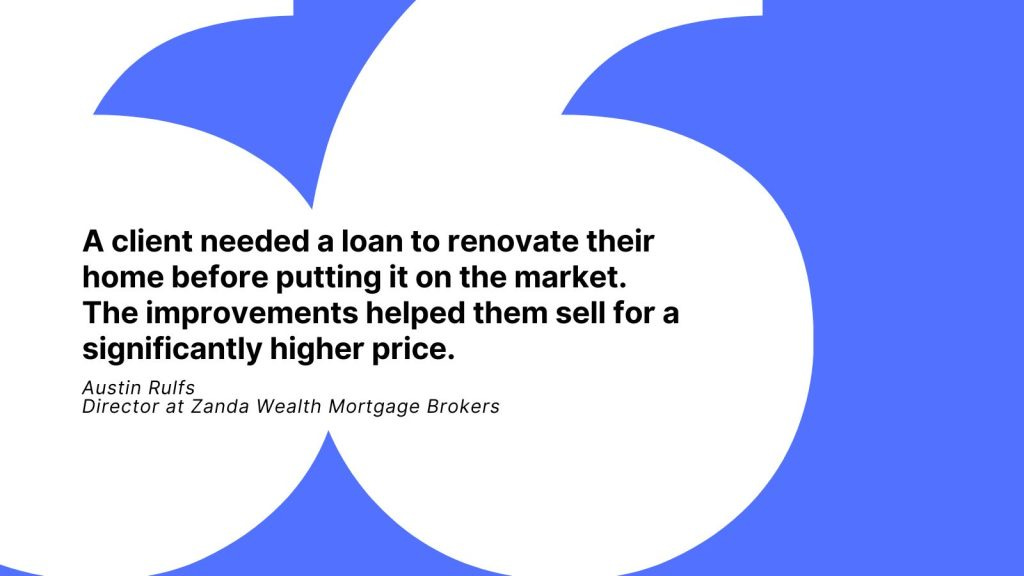Renovate now, pay later: Are home improvement loans a good idea?
Getting a home improvement loan to fund your dream renovation can be smart if you play your cards right.
Elevated mortgage rates and a tight housing inventory have more homeowners turning to renovation instead of relocation in 2025. Yet the financial reality is eye-opening — recent data from SoFi reveals the average cost of a complete home renovation ranges between $40,000 and $75,000. For most families, this is a significant investment decision requiring careful planning.
Home improvement loans offer a pathway for transforming your living space without draining your savings. Before committing, though, it helps to understand what these loans entail, when they make sense, and how to get one.
What is a home improvement loan?
A home improvement loan is a financing type that lets homeowners borrow money to renovate or upgrade their homes. It helps you pay for projects such as remodeling a bathroom, adding a room, or fixing damage after a natural disaster.
"Home improvement loans are beneficial for homeowners looking to make improvements that will improve their quality of life," says Austin Rulfs, director at Zanda Wealth Mortgage Brokers. Those looking to increase their home’s value before a sale or refinance may also consider them. They can be especially helpful if you have a high-cost project, such as a major kitchen remodel or an ADU addition.
How home renovation loans work
Getting a home renovation loan is relatively straightforward. You’ll apply with a lender, bank, or credit union. They’ll review your credit history, income, and other financial information to determine if you qualify.
"[Having] considerable equity may facilitate the process of obtaining the loan," notes Rulfs. "[Otherwise], a lender may request an appraisal to ensure that the house is worth as much as the loan would be."
If approved, you’ll get the funds from your loan in a lump sum. From there, you’ll use them to pay for your renovation project. Then, you’ll repay the loan over a set term — typically with fixed monthly payments. The interest rate on your loan depends on factors such as your financing type, credit score, and debt-to-income ratio.
Pros and cons of home renovation loans
Securing a home renovation loan can be an excellent way to finance your dream project, but it’s not for everyone.
Weigh these pros and cons before getting one:
PROS
Can increase your property’s value
Get immediate funds for urgent repairs
Possible tax deductions depending on interest paid
CONS
Adds to your financial liabilities
Risk of spending more than the value added to your home
Potentially high interest costs
Home improvement loan requirements
Lenders have unique home improvement loan requirements. But here are typical ones to expect, according to experts:
A credit score of at least 680: Higher scores may qualify for better rates and terms.
Detailed project plans: "Have a clear plan for the renovations," advises Rulfs. Lenders may ask for contractor estimates and information about your renovation.
Equity in your home: For home equity loans or lines of credit, you’ll need sufficient equity.
Low debt-to-income (DTI) ratio: A DTI ratio no higher than 45% shows lenders you can afford to take on new debt.
Proof of income: Lenders want to see that you have a stable income to repay the loan.
How to get a home improvement loan: Step-by-step process
Applying for a home improvement loan looks a little different for everyone, depending on what lenders ask for and individual circumstances.
Step #1: Find out how much you need to borrow
Get quotes from contractors and factor in the cost of materials, labor, and any unforeseen expenses. Having a clear idea of how much you need to borrow will help you choose the right loan option.
When budgeting for your renovation, be realistic about costs. Omer Reiner, president of real estate investment company Florida Cash Home Buyers, warns that home projects tend to cost more than you think they will. To prevent financial strain, add a 15% to 20% buffer to your renovation budget. This cushion helps cover unexpected issues such as damaged subflooring, outdated wiring, or plumbing complications that often only become apparent once work begins.
Step #2: Check your credit score
Your credit score plays a major role in determining your eligibility for a home improvement loan and the interest rates you’ll get. Check your credit report for any errors and take steps to improve it if necessary. A higher score will likely qualify you for better loan terms because lenders predict you’ll repay on time.
Step #3: Shop around and compare loan offers from multiple lenders
Compare APRs, terms, and fees from various lenders, banks, and credit unions. Look for loans with competitive interest rates, flexible repayment terms, and minimal fees.
Step #4: Gather required documents
Your lender may ask you to provide certain documents to verify your income, assets, and debts. These often include your driver’s license, pay stubs, W-2 forms, tax returns, bank statements, project estimates, and proof of home ownership.
Step #5: Submit your loan application and wait for approval
Many lenders offer online applications, making the process more convenient. After you submit your application, the lender will review everything and make a decision. Approval times vary, but some lenders may get back to you within a few business days.
Step #6: Once approved, review and sign your loan agreement
Make sure you understand the terms, interest rates, fees, and repayment schedule. Only sign the documents to accept the loan once you’re comfortable with the agreement.
Step #7: Receive your funds and start your renovation project
The lender will release the funds after you sign the loan agreement. Most likely, you’ll see the money in your bank account or receive a check in the mail. Once you have the funds, you can start renovating. Stick to your budget and timeline to ensure the project stays on track.
Step #8: Make on-time repayments to your lender
Automatic payments or reminders are your best friends here. Late repayments can result in fees, while on-time or early repayments help you improve your credit.
Can’t make your payments? Contact your lender immediately to discuss restructuring your loan or getting a temporary forbearance. Being proactive can often prevent severe financial consequences.
What types of home renovation loans are available?
You have several loan options when financing your home renovation project. The right choice depends on your situation, such as your income and the equity you have in your home.
If you don't have much home equity, personal loans or credit cards may be more suitable. But if you have substantial equity, a home equity loan or cash-out refinancing may offer lower interest rates.
Home improvement personal loans
Many choose personal loans for their home renovations because they’re unsecured — meaning they don’t require collateral. They often have fixed repayment terms and interest rates. Getting a personal loan may be a good idea if you don’t have equity in your home or need capital quickly.
Home equity loans
With a home equity loan, you can access funds by leveraging the property equity you’ve accumulated over time. These loans usually have fixed interest rates and monthly payments, making them a predictable and stable option.
Cash-out refinancing
When you opt for cash-out refinancing, you essentially replace your current mortgage with a new one for a higher amount, pocketing the difference in cash. This option can be advantageous if current mortgage rates are lower than your existing rate. It’d allow you to secure a lower interest rate while getting funds for your renovation.
Credit cards
While not a traditional loan, you can pay for smaller home renovation projects with credit cards. This option may be convenient, as long as you know you can pay off the balance quickly. Otherwise, you could end up paying a high APR.
Final thoughts: Are home renovation loans worth it?
A well-planned home upgrade can boost your quality of life and your property’s value. When you need quick funding without depleting your cash reserves, home improvement loans offer flexible repayment options to make your vision a reality. But before signing on the dotted line, consider your financial situation and long-term goals. Will this stretch your budget too much? If so, it may be better to save up and renovate later.
Enjoying Wavecomber and want to support my work? You’d make my day with a Pink Drink.
Note: This story was originally published on https://wavecomber.com/are-home-improvement-loans-a-good-idea/.
Sources:
1. SoFi, “How much does it cost to remodel or renovate a house?” Accessed 23 Apr 2025.








